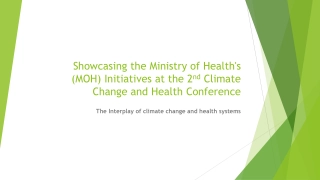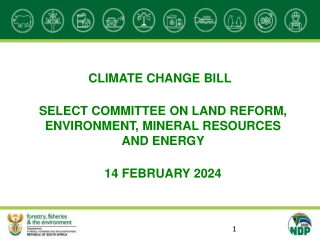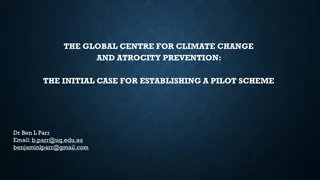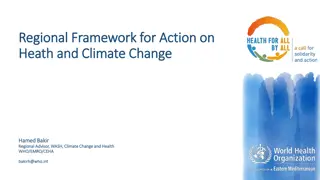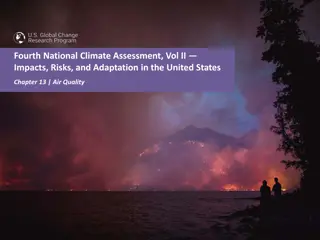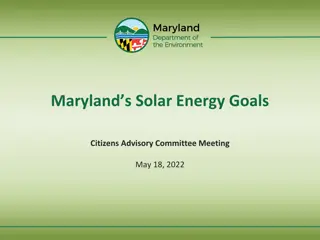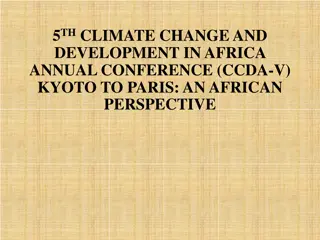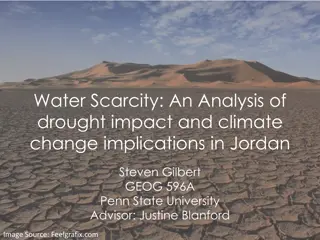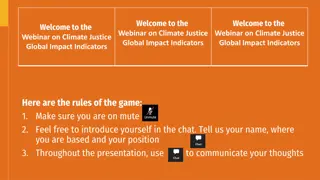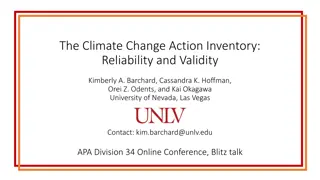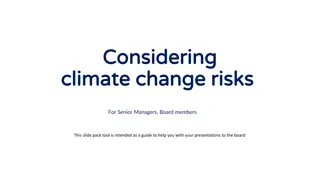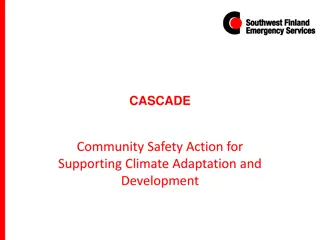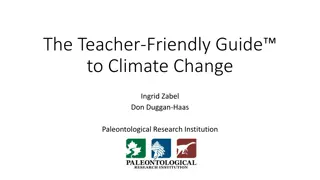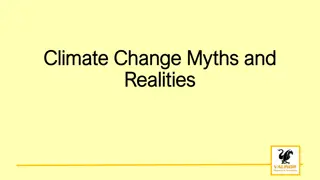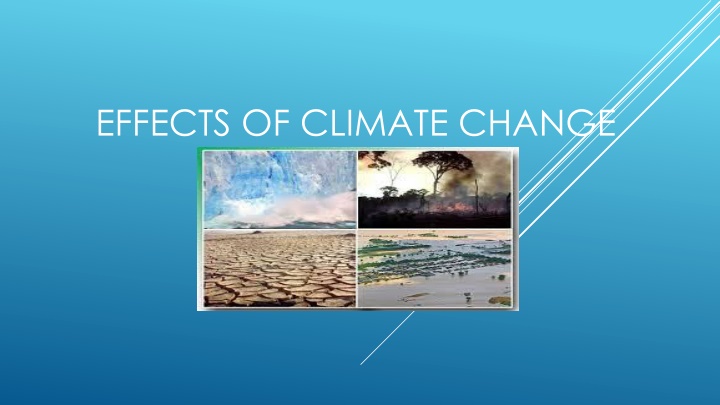
Impact of Climate Change on Plants, Animals, and Weather Patterns
Discover the detrimental effects of climate change on plants, animals, and weather patterns including changes in soil interactions, extreme droughts, melting ice caps, and human-induced factors like fossil fuel emissions. Understand how climate change is altering ecosystems and threatening global biodiversity across different regions.
Download Presentation

Please find below an Image/Link to download the presentation.
The content on the website is provided AS IS for your information and personal use only. It may not be sold, licensed, or shared on other websites without obtaining consent from the author. If you encounter any issues during the download, it is possible that the publisher has removed the file from their server.
You are allowed to download the files provided on this website for personal or commercial use, subject to the condition that they are used lawfully. All files are the property of their respective owners.
The content on the website is provided AS IS for your information and personal use only. It may not be sold, licensed, or shared on other websites without obtaining consent from the author.
E N D
Presentation Transcript
Climate change is hurting us. The effects of climate change on plants: -Plants will be affected as the climate becomes increasingly hot and dry. These changes will alter the way plants interact with microorganisms in the soil.
The effects of climate change are also harming animals: -In the Horn of Africa, changes in climate are causing longer and more extreme droughts. Thousands of animals died from lack of water and little food. -Global warming is melting the polar ice caps and raising the sea level. Around the world, coastal cities are being threatened by floods and storms. For example, in Argentina, there were several floods in 2016, and several dogs, horses, and oxen died.
Weather patterns: -Latitude: Latitudes close to Ecuador, receive greater amounts of sunlight, affecting a larger area of the Earth's surface. Consequently, the average temperatures of those places close to Ecuador will be higher. And the further away from Ecuador the place, the lower the temperatures. -Altitude: The higher the altitude, the rarer the air becomes. Consequently, the temperature tends to be lower, because in these conditions, the air molecules, in low concentration, cannot retain heat and humidity.
Human activity: -The burning of fossil fuels for industrial activities, for power generation, and transportation, emit a large amount of carbon dioxide and greenhouse gases.
In Europe, it rains more than in our region, mainly in the Algarve. The Algarve has been the area of the country with less rainfall and that is why we have dams with very low water levels. With the lack of water, we have drought, there is no water afterwards for agriculture, for human consumption. It is a huge problem. Here it does not snow like other points in Europe, nor do we have ice. But sometimes we have high tides, when the tide goes too high and the water enters the lower cities. It happened in Tavira and Faro for example. Then there are problems in establishments with things near the floor. In Europe there have been floods, because it has been raining a lot and then causes great damage to man, because it destroys nature and material goods. We have had more heat than in the past and this affects the drought situation. With the excess of heat, there is also a malaise in people's health, especially the most sensitive ones, such as the elderly.
Andr Custdio 9 C, N 3

